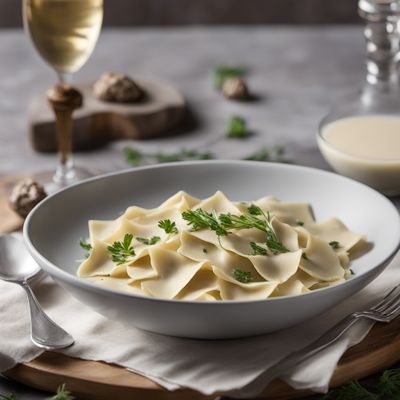
Ingredient
Champagne-like wine
Sparkling Elegance: Exploring the World of Effervescent Wines
Champagne-like wine is characterized by its effervescence, which is achieved through a secondary fermentation process. This process creates the iconic bubbles that dance on the tongue and give the wine a lively and refreshing quality. The taste of champagne-like wine can vary depending on the grape varieties used and the winemaking techniques employed. It can range from dry to sweet, with flavors that can be fruity, floral, or even toasty. The texture of the wine is often described as creamy and velvety, with a light and delicate mouthfeel. In terms of appearance, champagne-like wine is typically pale golden in color, with a vibrant effervescence that adds a touch of glamour to any glass.
Origins and history
Champagne-like wine originated in the Champagne region of France, where it has been produced since the 17th century. The unique climate and soil conditions of this region contribute to the distinct characteristics of the wine. The production of champagne-like wine is governed by strict regulations, ensuring that only wines produced in the Champagne region can be labeled as "Champagne." Over the years, the popularity of champagne-like wine has spread beyond France, with sparkling wines produced in other regions adopting similar production methods and achieving their own unique flavors and styles.
Nutritional information
Champagne-like wine is relatively low in calories, with an average of 90-120 calories per 5-ounce serving. It is also low in carbohydrates and fat, making it a lighter option compared to many other alcoholic beverages.
Allergens
Champagne-like wine may contain sulfites, which can cause allergic reactions in some individuals.
How to select
When selecting champagne-like wine, look for bottles that have a clear and intact foil capsule, indicating that the bottle has been properly stored. Check for a tight and secure cork, as well as a well-maintained label. Additionally, consider the producer and the specific style of champagne-like wine you prefer, whether it's a dry Brut or a sweeter Demi-Sec.
Storage recommendations
To maintain the freshness and quality of champagne-like wine, store it in a cool, dark place, away from direct sunlight and extreme temperature fluctuations. Once opened, reseal the bottle tightly with a champagne stopper or a sparkling wine closure and refrigerate it. Consume within 1-3 days to enjoy the best flavors and effervescence.
How to produce
Producing champagne-like wine requires specialized equipment and expertise, making it challenging for amateurs to produce at home. However, there are other sparkling wine styles, such as Prosecco or Cava, that can be made using simpler methods and are more accessible for amateur winemakers.
Preparation tips
To serve champagne-like wine, chill it in the refrigerator for a few hours before opening. When opening the bottle, hold it at a 45-degree angle and gently twist the cork while applying slight pressure. Pour the wine into flute or tulip-shaped glasses to preserve the bubbles and enhance the aromas. Avoid using wide-rimmed glasses, as they can cause the bubbles to dissipate quickly. Pair champagne-like wine with a variety of dishes, including seafood, poultry, soft cheeses, and desserts. It also makes a delightful aperitif or can be enjoyed on its own to celebrate special moments.
Culinary uses
Champagne-like wine is commonly used as a celebratory beverage, enjoyed on its own or in cocktails like mimosas or Bellinis. It can also be used in cooking to add a touch of elegance to dishes, such as champagne risotto or champagne-poached fruits.
Availability
Champagne-like wine is primarily associated with the Champagne region of France, but sparkling wines with similar characteristics are produced in various countries around the world, including Italy (Prosecco), Spain (Cava), and the United States.



